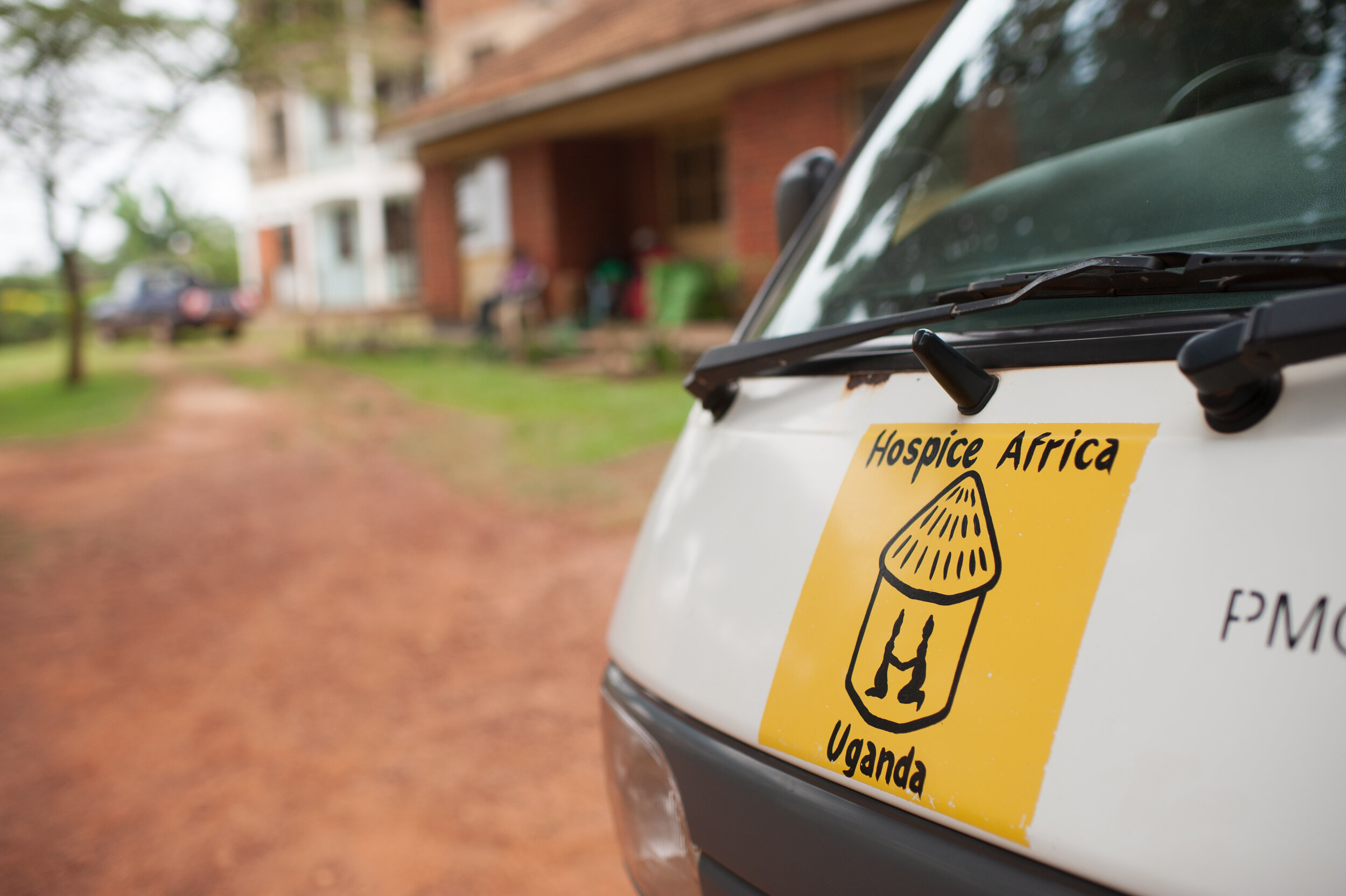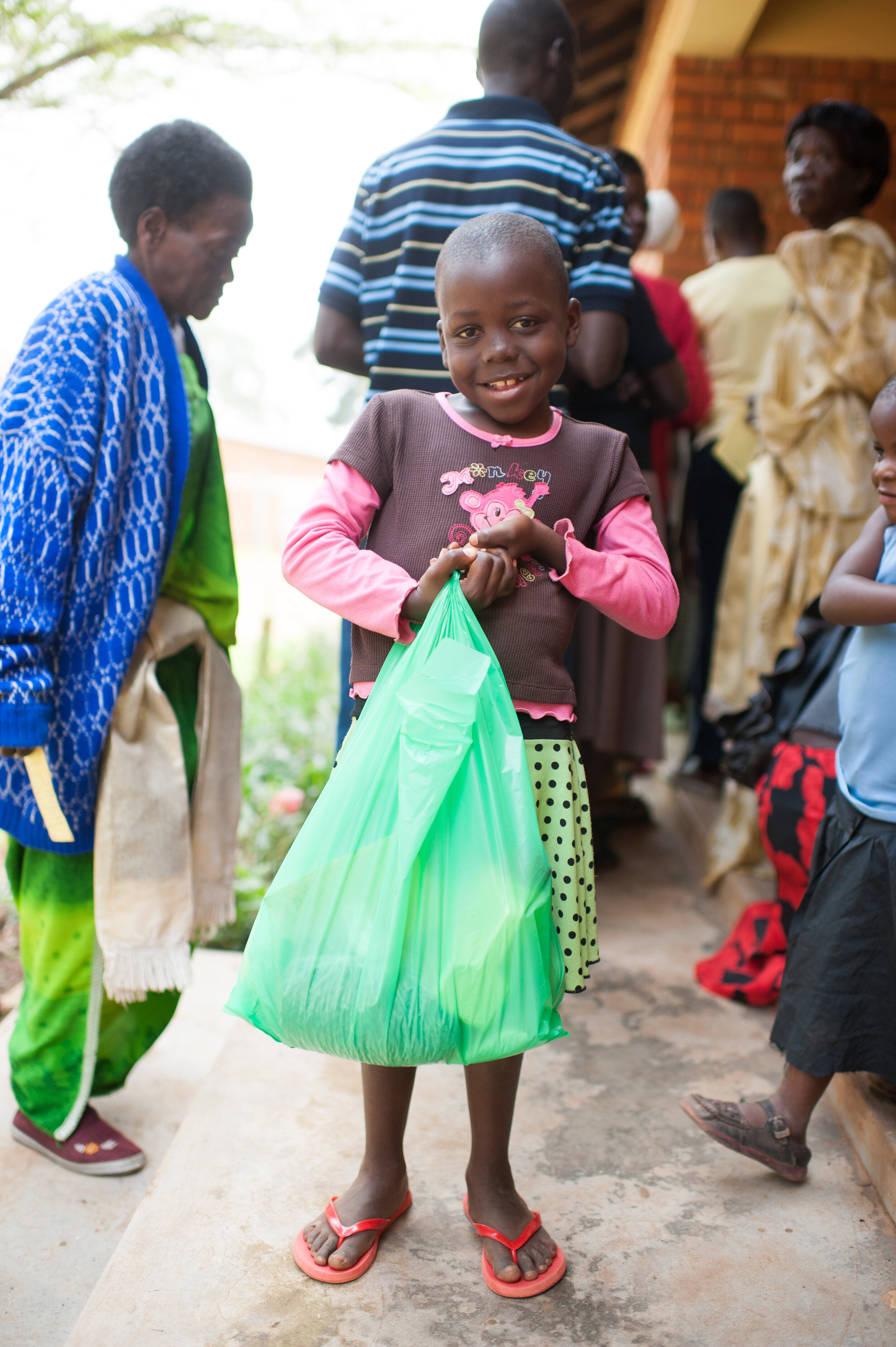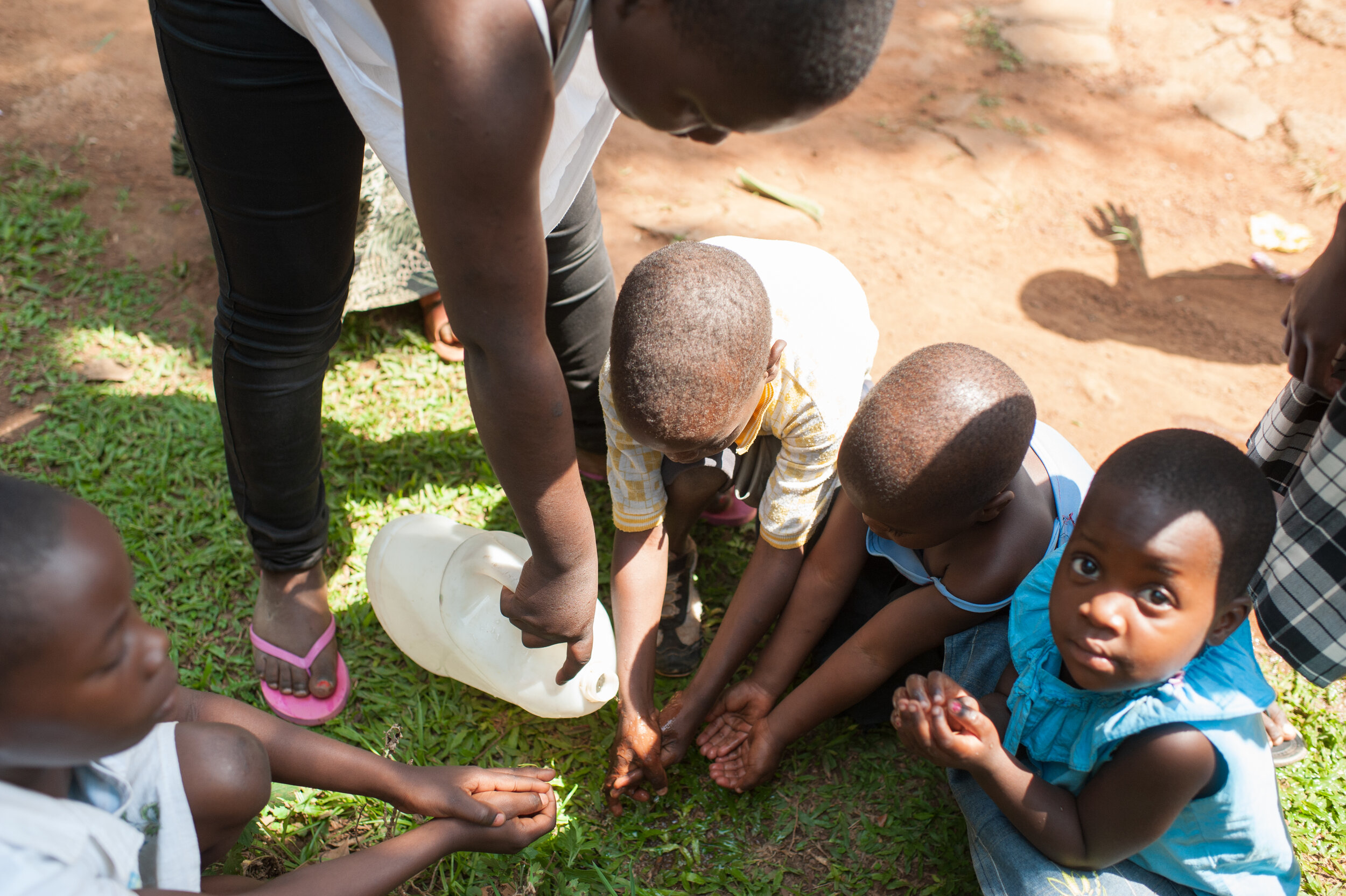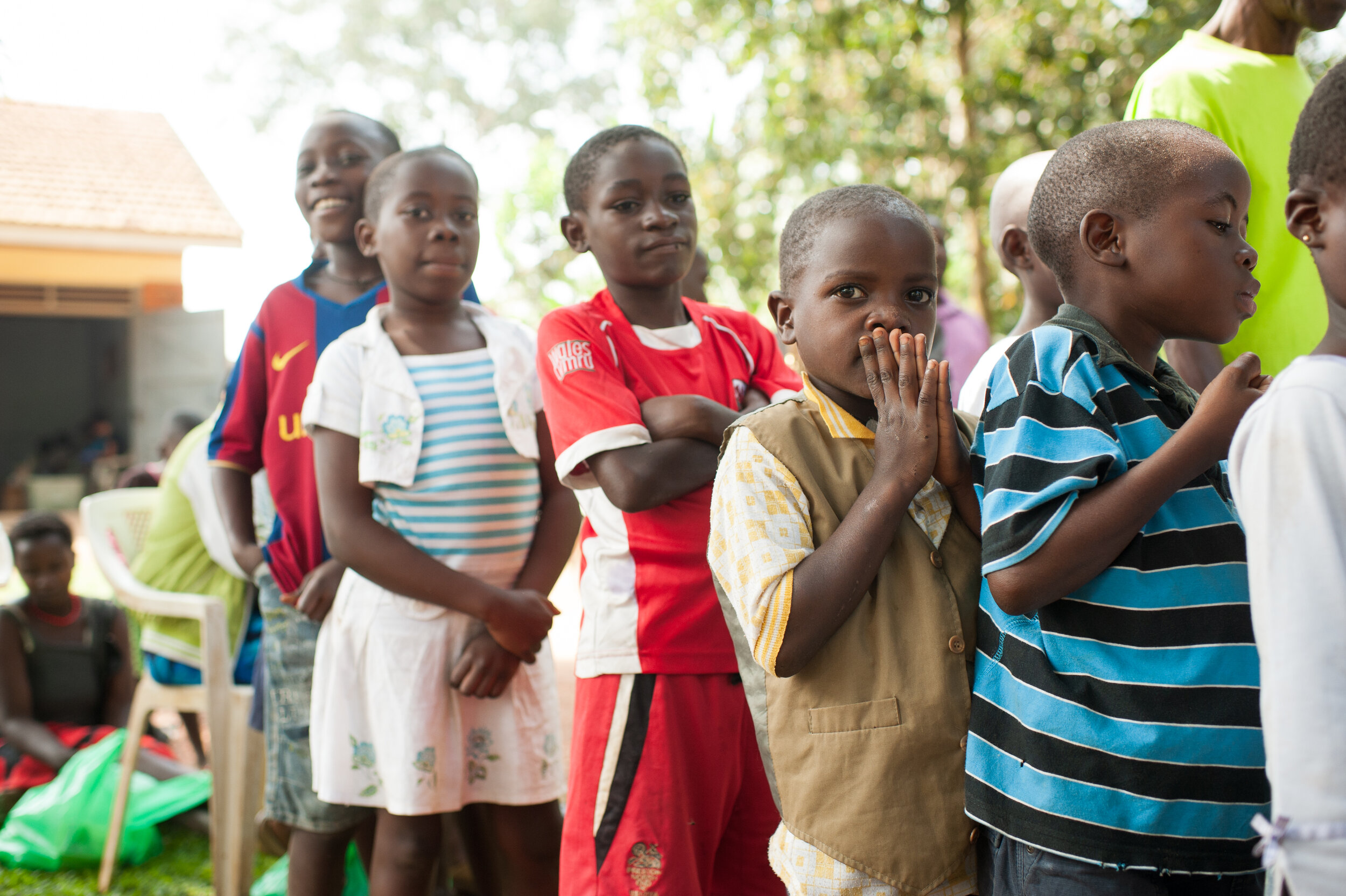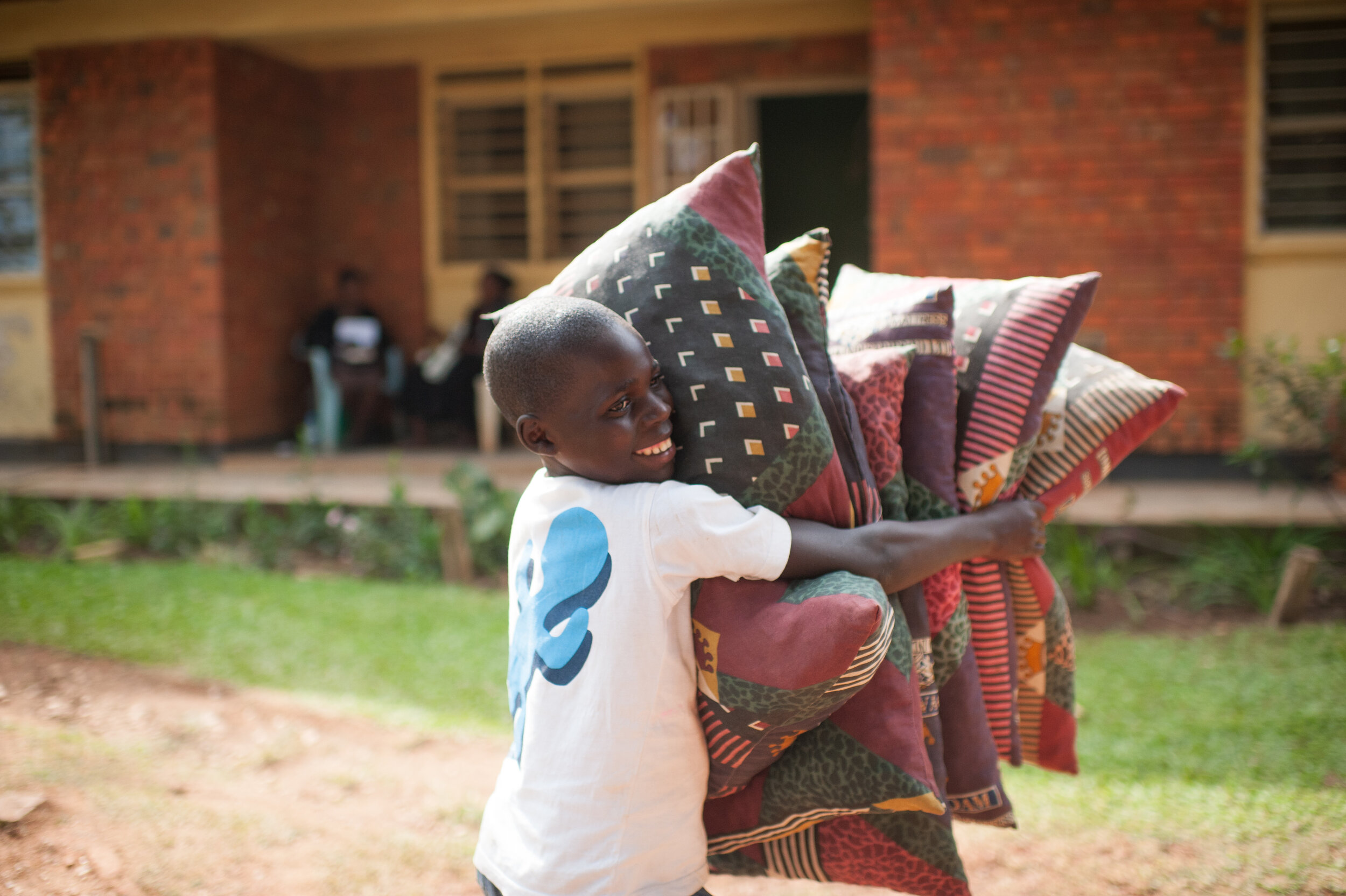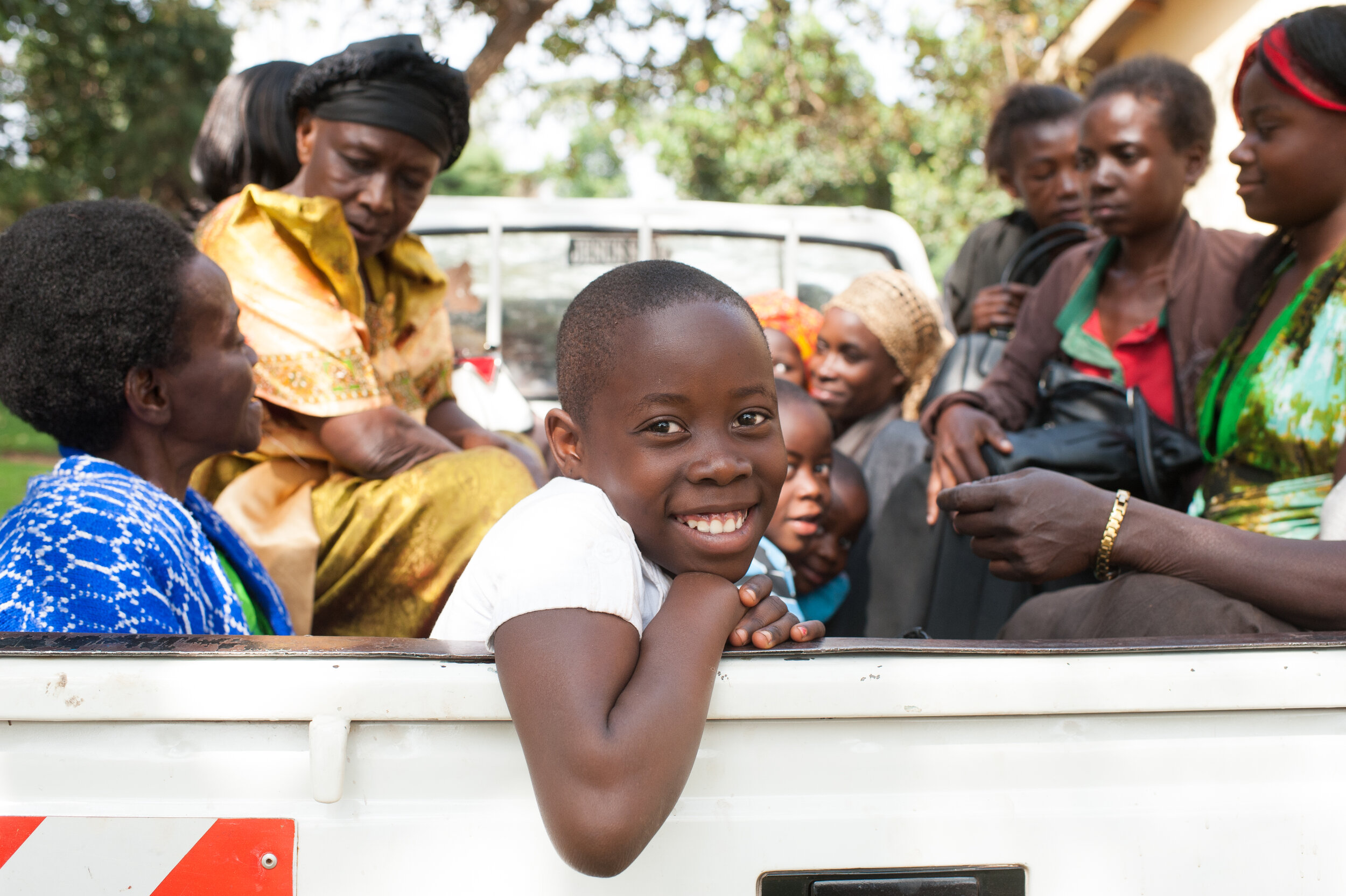2012 Radiotherapy Access Expansion
August 10, 2012
By Jennifer Hompoth
Yesterday, I spent a full hour looking for a kitten. Fluffy and grey, with a few mottled cream coloured zig zag patterns, he was a tremendous ball of energy, and as such, was noticeably absent from the gaggle of half a dozen or so other ginger tabbies resident at Dr. Anne’s home, here in Kampala. He’s particularly difficult to spot, as his tiny size, and coloured fur played perfect camouflage on the hardwood patterned floor of this house, the light coming dimly from a few sources now that the sun had set on Lake Victoria.
I found him on the seat cushion of a dining table chair, a soft purring crescent burrowed unto himself. Not wanting to disturb him, I stroked his fur gently for a moment, and let down the tablecloth to restore his secrecy, sort of. No need for alarm—kitten found.
Sometimes, things are there obviously in front of you. And sometimes, the more accustomed one becomes at simply looking and not perceiving with full depth-the more its easy to overlook things which should shock or startle us.
Forgive the optical language---what I actually do rely on in this story is my sense of sight, of perception, of description based on my noticing. Your sights, having not been mine these past few days in Uganda, will perhaps not see what I am trying to show you. But I will insist, anyways, and thank you for the indulgence. Those of you who know me well, will know the feeling of watching me frantically look for our cat, often calling him inside from the dark doing goodness knows what, on a nighttime killing or something equally sordid and feline. So watch along with me, even if what I illustrate will at first appear a bit crazy.
Today, Dr. Joseph Kigula Mugambe, the head radiation oncologist of Mulago Hospital sat with our team. He listened with wisened, bespetacled eyes, folding his hands and leaning back easily in his chair, smiles playing on his face as we tried our best to affect the tone of gravitas that 30 year olds meeting with senior physicians such as Dr. Joseph should command. Dr. Joseph is a man who laughs easily, like many Ugandans, with a generosity towards life that I can only admire. Together, we spoke of the “worse case scenario”: what might happen if the sole machine capable of providing radiotherapy to the country’s entire population might break down?
The machine is a creaky bit of work, held together by questionable adhesive-duct tape, I think. Breaking weekly, it nevertheless is in use 20 hours a day, when it is not down for repairs. Working in the midst of these conditions, I think, must be maddening---proceed as usual, treat as many patients as possible, never knowing just when the malfunction is actually a permanent death. Joseph raises this point—when would we actually know, in certainty, that the machine is really broken? Two weeks of not functioning? A month? Number of patients missed? Surely, we can set a standard, I offer, quite unhelpfully. The machine, I think, is decidedly palliative, but there is no sympathy-just the expectation of its labours until the very, very, very end. And the teams of dedicated professionals-nurses, physicians, physicists---buzzing around in their well-rehearsed maneuvering to bring patients to the waiting area to the in-between waiting space with the drawn curtain, to the planning simulator, to the radiotherapy room with the cobalt. Repeat.
I wonder to myself how those who make decisions, far from the ground of clinical practice in this hospital can possibly go about their days knowing that the one and only machine in this whole entire country is on the way to a permanent exit. That its breakage might mean several things: the unnecessary deaths of patients in the interim, while a new unit is set up, and quite possibly, the loss of the very skilled people whose labours make a Radiotherapy department, and cancer care itself—possible. Not to mention—Melissa makes mention of this—the pricey and hazardous job of arranging for the disposal of the source of the cobalt machine. Do we have a plan for the freaking nuclear waste, people? The shell below is an image of the lead container in which the hot mess was initially delivered to the Radiotherapy department. It sits casually against a wall, in the patient waiting area, to the left of the black-and-white television whose crackling image is captivating most of the hospital patrons’ attention. I have never ever noticed this shell before-and yet it is the size of a small drum. It looks like an empty time capsule. Maybe it can be taken away by the Chinese, mentions the Medical Physicist-they have offered to do it cheaply, but costs are rising yearly.
What if the machine breaks suddenly? Dr. Joseph explains, in his calm and slightly bemused demeanor, that they have begun speaking of a plan, one in which the department musters all of its resources just in case it is left to hang, and must save itself alone, without the inflated promises and watchful negligence that high-level adiministrators generally inflict on this Health Care system.
I am glad. We can be part of this plan. We commit to supporting these intrepid fighters, these cancer physicians, nurses, therapists, in a way that will allow their integrity as a department. We promise that Road to Care, and Canadians, will be part of the solution. We take a deep breath, and hope, too, that the machine’s slow fizzle out of this world won’t be too soon.
I return home tonight. The cats are gathered around the feeding bowl, a gaggle of orange and white. No sign of the grey fluffy thing. I search, this time, less frantically---I know it is a matter of time before I notice his hiding spot, and greet him once again. After about ten minutes of my best looking, I am interrupted by Alice, one of the women who works for Anne. She laughs at me, and says that the kitten is not missing, that the grey one has been given away this afternoon—to a doctor so-and-so who works at Hospice. I am startled--- my expectant search won’t be fruitful this time. The kitten is not here. Sure, he’s at someone else’s home, and I have plenty of other human atrocities and injustices to ponder here in this country. But the absence of this touchstone of familiarity, the visceral comfort of the soft grey fur-the sight of grey kittens’ tumbling with his ginger sibling—is a focal point for all of the sadness which I feel. Immature as this is, I am really fucking sad that my friend, this grey ball of fur, is gone.
The remaining ginger tabby nudges and suckles the mother cat, and falls away to sleep in a huddle, his tiny body nestled in hers.
And I stretch my memory of this place, of Uganda, of the comforts I have experienced, and for the striking suffering of all I have seen, and I try to cry for the things I have missed, for the things I know are so impermanent. I am in this place for such a short time. Am I crying for the kitten, for the women with cancer who may not find a cure, or crying for the street child, barely an infant begging daily in the roundabout in the middle of the dusty street? May I watch, sharply, such that I do not miss the things that are so easily blurred into the background of “life as usual,” the lives of people (and kittens) here. I suppose I can take some of Kara’s wisdom, and recognize the impossibility of having to “save” anyone/thing while I am here, and to share, experience, and live with an openness that recognizes our lives are intertwined with, but not in control of, the lives of others. This is an extremely difficult thing to practice, especially with fluffy kittens. Maybe even with cancer patients in developing countries.
James Myshalyk, in his book, Six Months in Sudan, muses on his own writing, and the readers and people “back home” who followed his blog during his time as a student intern with MSF. He writes “because people are hungry to be brought closer to the world, even its hard parts…I believe that which separates action from inaction is the same thing that separates my friends from Sudan. It is not indifference. It is distance. May it fall away.”
May distance fall away. But may I also know what I must hold life’s lessons at arms’ reach, gently, allowing shape and form and substance to approach me, and shake me when I am too dull or when all I see is what I have crafted in my own minds’ eye. May that which I see up close be sharpened, vivid, and most importantly, may my need for familiarity not dull the incredibly rich human portrait of all that I see and experience here in Uganda. May we share this journey with you. Whoever you are-thanks for reading. Post a comment and say hello sometime!
Jen
August 8, 2012: Outreach Visit with Hospice Africa Uganda
By Melissa Sung
Day 5 in Uganda so far and each day has exceeded the previous day when it comes to experiencing the hospitality and generosity of the people here. Yesterday’s opportunity to spend time with the HAU mobile palliative care unit at a nearby community was by far one of the most touching experiences I’ve ever had.
There were 10 of us (including the hospice driver) that traveled together in a small white van from the hospice site to a nearby community where a group of about 50 or 60 patients were already waiting. Everyone was sitting on mats and mattresses set up by local volunteers earlier in the morning. What I came to realize was that these patients were not only there to see a clinician and to receive medication for their symptoms but that they go to spend the day together as a community and provide emotional support to each other.
Most of the patients (mostly women) were HIV positive, and many were also diagnosed with cancer. What saddened me most was that there was also a group of children with HIV waiting to receive the same type of care. I immediately grew to love these children. Watching the way they shared what little they had with each other, even offering to share what was likely to be their only real meal for the day to me just made me want to cry.
I can’t say enough about the strength and courage of the people of Uganda that I’ve met so far and that includes many of the hospice staff and volunteers that give so much of themselves to help the patients. Hopefully the images will better convey what I’ve been trying express in words.
Thanks for continuing to follow us on our journey!
-Melissa
Image 1 : Arrival at the Hospice Africa Uganda mobile palliative care site. Image 2 : Kara helping to dispense ibuprofen at the pharmacy station. Image 3 : Families picking up food rations provided by hospice. Image 4 : Children helping each other wash their hands before lunch. Image 5 : A young boy helps to clean up after the clinic. Image 6 : Patients heading home after the clinic visit.
August 7, 2012: A dream come true
by Kara Schnarr
Here I am doing the “Ebola Handshake” with Josephine, one of the nurses that works with the Road To Care patients.
First let me introduce myself. I am the newest member of the RTC board, and am so honoured to be a part of this amazing group. My road to Road To Care, started back in 2005 when I was a graduate student. I had attended ASTRO (American Society of Therapeutic Radiology Oncology) and at the time was not feeling completely at peace with my current path towards research. I had begun to dream about doing work abroad, experiencing and embracing new cultures ... but wasn’t sure how to go about it. At this conference, Paul Farmer (of Partners in Health) was the guest speaker and gave a talk to encourage the world of Radiation Oncology to push towards improving access to Oncology care around the world. He told stories of his experiences in Rwanda, Haiti and Lesotho - and I was so inspired. I had tossed around the idea of entering medicine to become a radiation oncologist, but wasn’t sure if this was a field that would be compatible with international experience. After hearing Paul Farmer speak on his experiences improving access to care and encouraging community-based care, I felt truly inspired. I decided to pursue medicine, with the goal to become a Radiation Oncologist then set out to do as Paul Farmer said. So I did it – I finished my PhD, and then went to medical school at age 28. I now have quite substantial medical school loans and more than a few grey hairs. However, I am a second year Radiation Oncology resident at McMaster University – and now living out my dream here in Uganda with the opportunity to work with Road To Care.
With only 2 days in, I have already had so many amazing experiences. Today we went to the see the women in the Road To Care program staying at the Woman’s Hostel. They greeted us with the most amazing performance. They sang about their struggles with cancer and how thankful they are with assistance that RTC has provided.
Click Here to watch The Radiotherapy Hostel Greeting YouTube Video
These women would have otherwise not been able to afford treatment and would have no choice but to let their cancer advance and eventually end their life. Seeing them sing and dance with such emotion - I was brought to tears. I am here. I am living my dream.
Kara.
August 6, 2012: A Return to Hospice Africa Uganda
"Welcome home!" exclaims Dr. Eddie, a clinical officer at Hospice Africa Uganda (HAU).
It's been a year since we were last here in Uganda. This time, our team's goal is to find out how Road to Care can support the expansion of the radiotherapy department at Mulago Hospital.
The sole cobalt radiotherapy machine in Uganda
Why expand?
For years now, physicians at Mulago Hospital, along with the Ugandan news media have highlighted the need to replace the country’s sole radiotherapy unit at Mulago Hospital. This cobalt radiotherapy machine has been operational since 1995. It is used to treat over a thousand patients each year. Currently, it is in use over 20 hours each day to accommodate the vast number of cancer patients requiring treatment. The waiting list to get onto treatment can be weeks.
When I was in Uganda in 2009, the machine had a break down each week. Patients with cancer had days of delay because the machine required repair.
Shipping a used, decade-old cobalt machine from Canada is problematic, impractical and exorbitantly expensive. Physicists and radiation safety officers whom I have spoken to have all advised against this idea.
Installing and commissioning a new cobalt machine takes months. If we simply removed the current machine, and put in a new one, there would be hundreds of patients during that period who would be unable to access desperately needed treatment.
That’s why Road to Care supports the current plans to expand the radiotherapy department at Mulago Hospital. We will meet with hospital administrator and government officials to strategize our contribution.
Hopefully, the current machine will last until the new one is installed.
So that's why we're here; to meet with those who will be most involved and most affected by this project. Follow along with us! We'll be here, blogging from now until August 20.
(Left to Right) Kara Schnarr (Treasurer), Joda Kuk (Chair), Jennifer Hompoth (Policy Advisor), Melissa Sung (Secretary).
Tomorrow, we're off to the radiotherapy department at Mulago Hospital!
Cheers,
Joda

